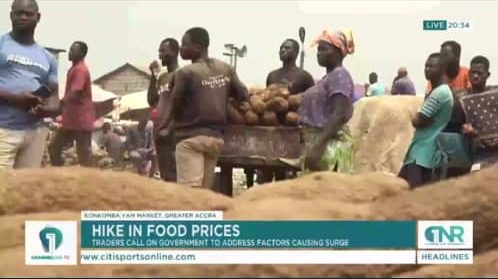The increased cost of farming inputs and the erratic rains this year are the reasons given by yam vendors at Sunyani’s Nana Bosoma Market for the rise in yam prices.
The yam vendors claim that an insufficient supply of yams on the market is another factor driving up pricing.
Presently, 100 yam tubers are offered for sale at farm gates throughout the Bono Region for between GHC6,000 and GHC7,500.
When comparing the price of yam at Sunyani’s Nana Bosoma Market to the same period in 2023, it is now higher.
Depending on their size, three yam tubers cost GHC50, while others might cost up to GHC100.
Sellers of yams at Sunyani’s Nana Bosoma Market have refuted claims that they had inflated the product’s price on purpose.
Nonetheless, they blame the increase on the rising cost of farming inputs and the erratic rainfall patterns observed in the Bono Region.
“There would have been an abundance of yam if it had rained. It is because of the poor rains that is why we do not have enough yam. I believe in the coming months we will have yam in abundance. As I speak it is only the Fiaso community that we can get yam from,” Rebecca Ataa Yeboah, a yam seller.
Akosua Yeboah, another yam vendor, said, “We are not accountable for the elevated cost of yam.” Due to the high cost of farming inputs, which is raising the price, farmers are suffering increased costs. We merely include a tiny profit margin.
“The high prices of yam can be attributed to the increased costs of farming inputs and labor,” Afia Serwaa continued. Farmers are compelled to employ labor, which raises their costs. Regrettably, we have had difficulties obtaining yam in previous years.
“Last year, we struggled to find yam, and this year is no different. The prices have skyrocketed, with 100 tubers costing between 7,000 cedis, 7,500 cedis,6,5,00 cedis and 5000 cedis.”













